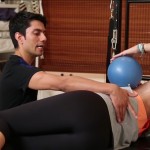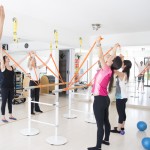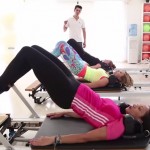Why STOTT PILATES® exercise give athletes an edge.
By STEFANIA DELLA PIA (STOTT PILATES® Program Director of Education Merrithew Health & Fitness™)
Participation in Pilates has grown exponentially around the world – and athletes are reaping the benefits. Experts have identified seven physical performance factors of great significance to athletes’ overall conditioning practices and rehabilitation of sport-related injuries including:
posture, balance, mobility/flexibility, stability, coordination, functional strength and endurance – all of which are addressed with this form of exercise.
“Pilates works your body inside and out for optimal body conditioning and is ideal for anyone wanting to expand their exercise regimens to include overall toning and strengthening moves that also work the inner mechanism of the body,” explains Moira Merrithew, Executive Director of Education for MERRITHEW™. “Pilates is very functional and gentle on the joints – a perfect complement to anyone’s sport conditioning or strength training routine. Unlike other strength training regimens traditionally designed for athletes, Pilates focuses on toning your muscles, thereby improving your balance and alignment.”
Most Pilates workouts begin in a supine (lying on the back) position, and then progress to sitting, or standing when stability increases and can then carry over into the sporting realm. This allows the athlete to train or retrain muscles then transfer movement patterns to outside the practice environment and into the sport-specific skill. Pilates helps build strong, healthy muscles, improves blood flow and engages all the muscles at the right time.“Pilates works on developing kinesthetic awareness of the body, or where it is in relationship to itself and the world around it. It also focuses on good postural alignment which will help an individual perform a movement efficiently thus reducing the amount of unnecessary strain on the muscles and joints,” Moira continues. “Specific strengthening exercises will also help to balance the muscles around a joint and balance pairs of muscles from one side of the body to the other.”
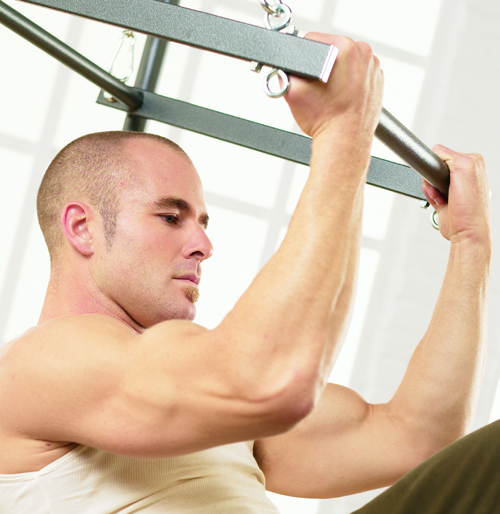
Active Recovery for Athletes
Laureen Dubeau, Master Instructor Trainer for Merrithew’s premier brand STOTT PILATES®, affirms that one concept in particular is being embraced by sports trainers: “This type of training progresses from general to specific and from simple to the more complex. The lighter resistance and multiangular training makes Pilates perfect for athletic development as well as anatomical adaptation, which focuses on developing muscle memory and patterning. This usually occurs in the preparatory or pre-competition phase of training for an athlete.”
There are also other areas of sport training in which Pilates can be particularly useful. Regeneration is the period of active recovery from a strenuous workout or game and Pilates can help in fulfilling this role and returning muscles and joints to their ideal anatomical length. Also, during rehabilitation, Pilates can provide an interim step between non-weightbearing to open-chain, through to explosive movements. “The focus on mobility, flexibility and strength through a full range of motion can help restore the injured tissues to a healthy state before sport-specific training begins,” adds Laureen. “In rehab, Pilates can be used at all stages from the most acute phase to advanced functional re-education.”
Pilates can be a very effective supplement to an injury rehabilitation program as it provides athletes with a challenging workout without impact or excessive weightbearing. Traditional athletic training methods help develop the muscles required in a specific sport, but may not address the stabilizing muscles around the joints or the torso. Often, one muscle is identified and exercises are designed to isolate that muscle, usually in a single plane of motion. However, Pilates exercises can be more complex than traditional moves and therefore recruits a larger number of muscle groups or strengthen the same muscles from many angles and in a variety of different ranges of motion.
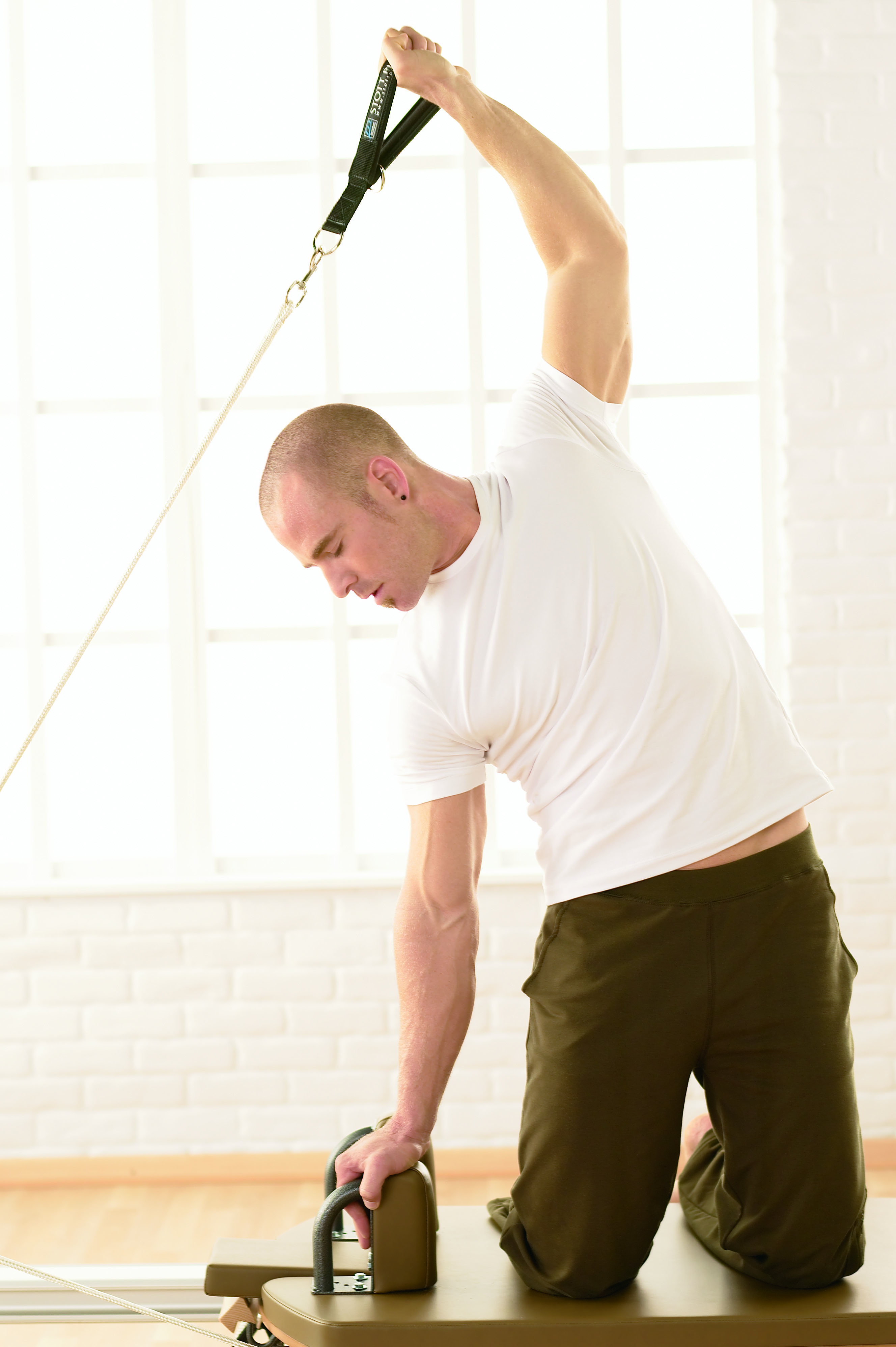
Targeting the Core
Core strengthening is an integral component of any injury prevention, rehabilitation or sports performance program. A strong core provides a dynamic link between the upper and lower body, alleviating excess stress on the peripheral joints. In athletes, core strength contributes to enhanced athletic performance by providing a solid foundation from which the upper and lower extremities can generate force for running, throwing, rowing or jumping.
STOTT PILATES® exercise improves core strength and balances the muscles around the joints, improving the way a body functions, looks and feels. The Five Basic Principles, upon which this method is based, focus on breathing, pelvic placement, rib cage placement, scapular stabilization and mobilization and head/cervical spine placement. Unlike other hardcore strength training regimens that are often geared toward creating muscle mass,
Pilates focuses on re-balancing the muscles around the joints, improving overall alignment and flexibility. The focus on core conditioning is paramount for optimal results and performance. Moira maintains that Pilates is used to increase joint stability and strengthen the deep core muscles which helps prevent injuries and leads to improved athletic performance.
“It [Pilates] also assists in rehabilitation after injury and creates balance throughout the entire body. As a result, athletes can withstand rigorous training regimes and ultimately improve their strength and endurance for skiing or hockey and prevent or recover from injury while maintaining an optimal weight for their activity of choice.”
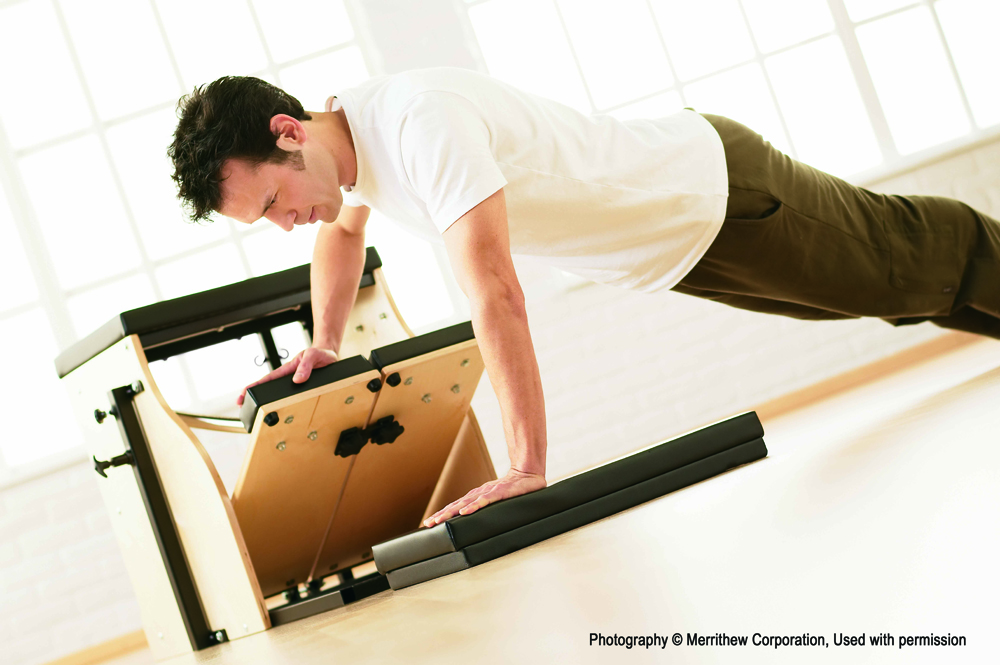
Enhancing Basic Training
Pilates exercises can be easily incorporated into regular sport-conditioning regimens. For instance, on a light weight day, a recovery workout day, or prior to skill acquisition days, a Pilates workout is a great way to work on neuromuscular coordination and proper muscle-firing patterns. Another option is to add some Pilates exercises to the warm-up ritual.
“Although core training may be a bit of a catch phrase in the fitness industry, the true definition of the term is widely acknowledged in medical and rehabilitation communities as the basis for reconditioning the support musculature of the body,” explains Mr. Lindsay G. Merrithew, President and CEO, Merrithew Health & Fitness™. “The attention to the core, proper alignment and good posture that Pilates offers through its numerous variations of movement, with or without specialized equipment, is a natural carryover for the athlete into regular living.”
Matwork is the foundation of the exercise system. All the basic exercises are designed to target very specific muscle groups in very specific ways and there are numerous exercises that can be performed and/or modified on mats found around the gym that can be helpful in addition to an already established workout program. Some popular Pilates exercises can put strain on the low back in clients with typical postural imbalances if not performed correctly, so it’s important that instructors are properly trained to teach more complex exercises.
Light equipment such as 1lb, 2lb or 3lb Toning Balls™ help close the kinetic chain, add proprioceptive awareness and add challenge to exercises by increasing the load or de-stabilizing the base of support. Other light equipment such as Stability Cushions™, Fitness Circles® and Flex-Bands® can also add variety to mat-based programming.
“Pilates focuses on active eccentric lengthening of muscles rather than prolonged static stretching. This results in maintaining the integrity and strength of the joint while allowing it to move more freely in a greater range,” adds Laureen. “Because Pilates works on a controlled eccentric strengthening of the muscles, it can be beneficial in assisting with overall flexibility and stamina. The emphasis on breath helps athletes focus better during the game and control precise movements required for their sport. The deep core stabilizers are challenged through all planes of motion – a strong and flexible core is extremely important for all sporting activities.”
Pilates is effective because it trains all three functional muscle systems. Trainers can encourage athletes to stabilize the joints effectively at low loads and then progress to strengthening eccentrically which will control deceleration movements by using the global stabilizers and finally progressing to the larger global mobilizers, with the inherent joint stability already in place.
When all muscular systems work in a timely and coordinated fashion, athletes can achieve large gains in strength, skill, coordination and biomechanical efficiency. Pilates focuses on improving stabilization of the lumbo-pelvic region, and therefore improved core stability will carry over to the sporting realm, reducing the risk of injury and improving performance.
Content © Merrithew Corporation, used with permission

